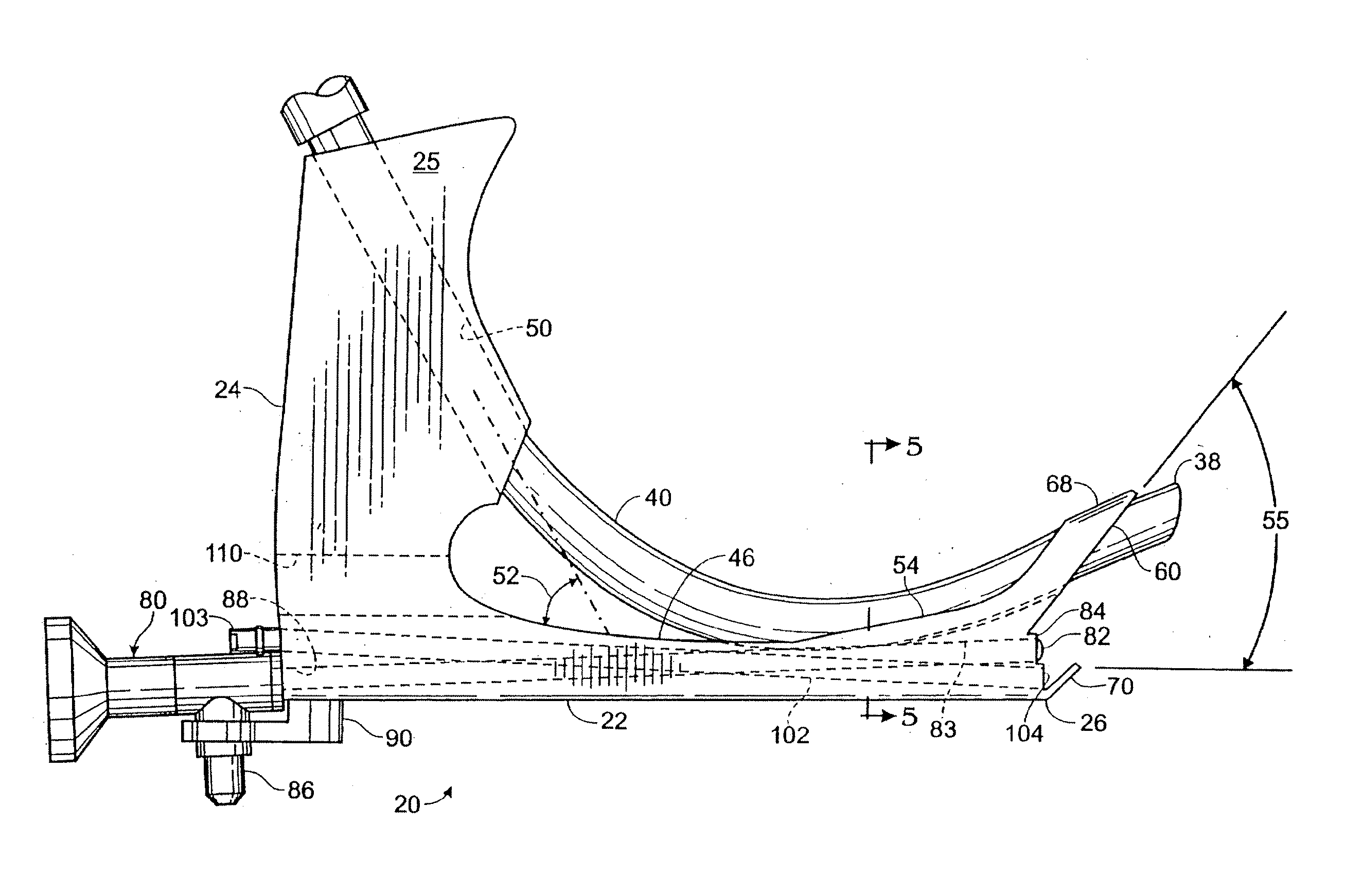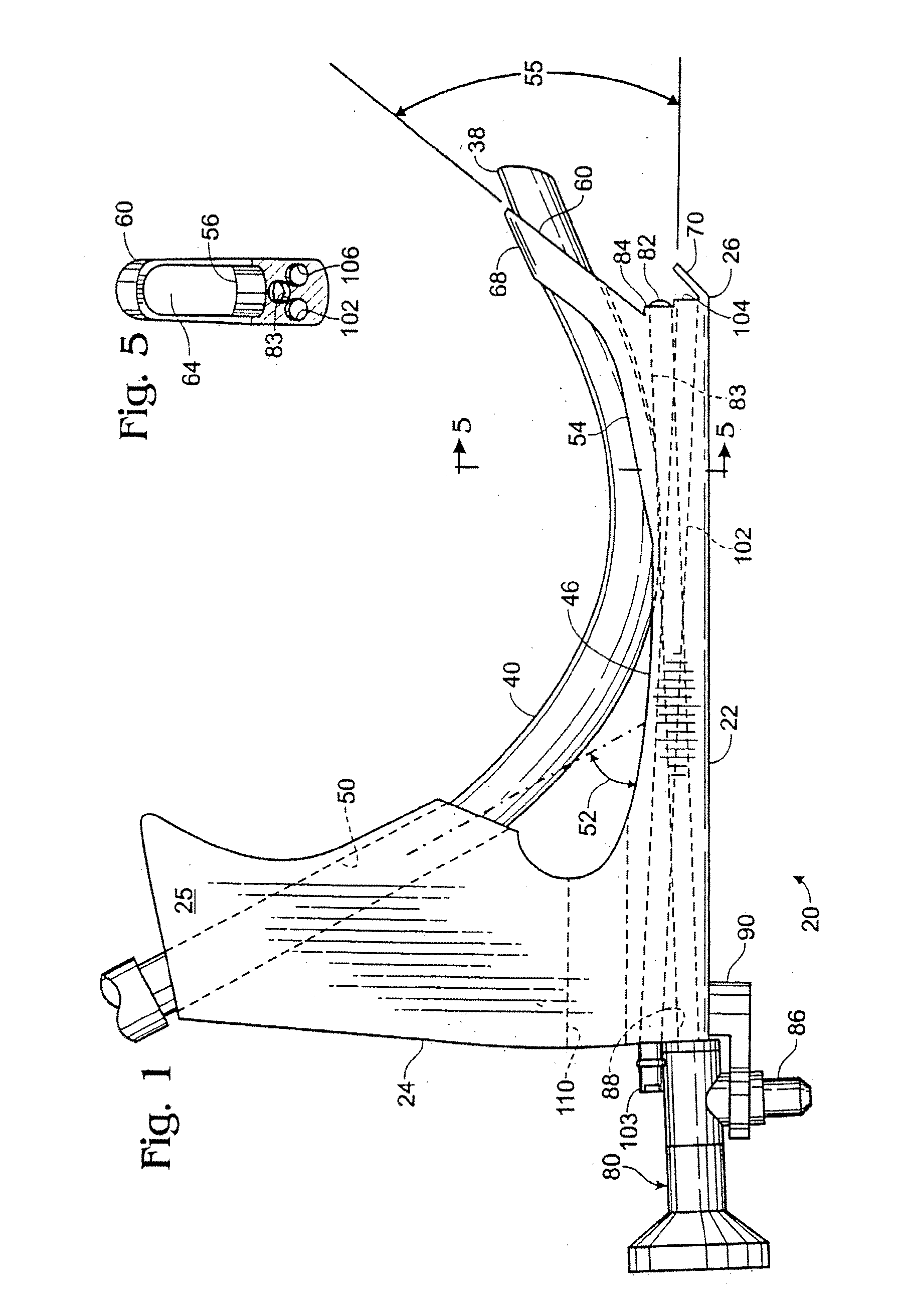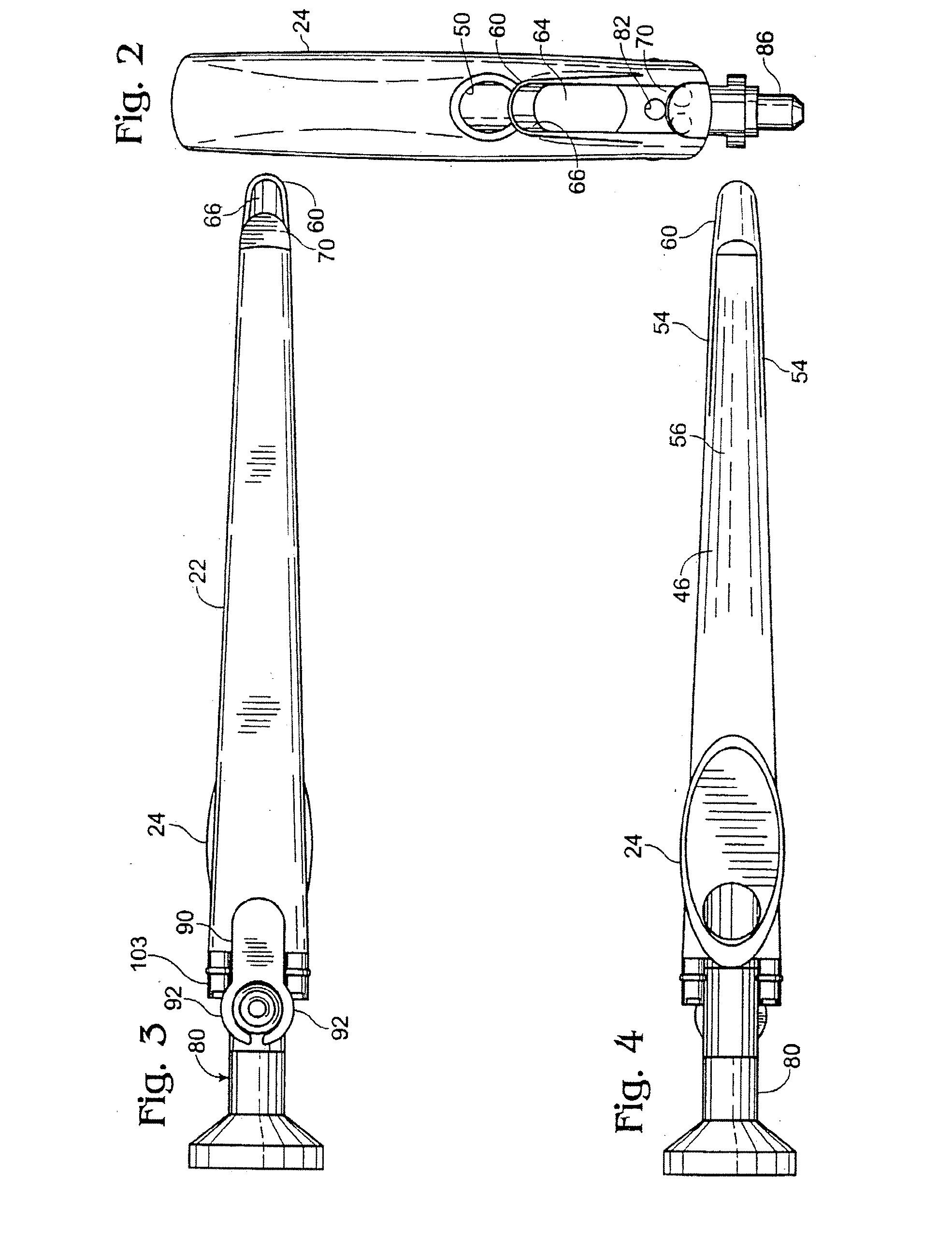Intubation instrument
a technology of intubation instrument and endotracheal tube, which is applied in the field of intubation instrument, can solve the problems of blockage of the practitioner's line of sight for inserting such straight devices, inconvenient use, and inconvenient use of the patient's mouth, so as to facilitate rapid and safe placement of the instrument and the associated endotracheal tub
- Summary
- Abstract
- Description
- Claims
- Application Information
AI Technical Summary
Benefits of technology
Problems solved by technology
Method used
Image
Examples
Embodiment Construction
[0067]An improved intubation instrument in accordance with preferred embodiments of the present invention is shown in FIGS. 1-11. In particular, FIGS. 1-6 show a first preferred embodiment, FIGS. 7, 8 and 11A-B show a second preferred embodiment, and FIGS. 9 and 10 show a third preferred embodiment. In order to avoid unnecessary repletion, common elements between these three embodiments are like numbered.
A. First Preferred Embodiment
[0068]With particular reference to FIGS. 1 and 6, a first preferred embodiment of an intubation instrument made and used in accord with the present invention includes a body 20 that generally comprises an elongated arm 22 with integrally attached handle 24. The instrument is preferably formed from metal or rigid plastic that can withstand sterilization.
[0069]The instrument arm has a distal end 26 that is inserted into the mouth 30 of a patient 28. Preferably, the instrument is inserted while the patient is recumbent, face-up, with the head tipped slightl...
PUM
 Login to View More
Login to View More Abstract
Description
Claims
Application Information
 Login to View More
Login to View More - R&D
- Intellectual Property
- Life Sciences
- Materials
- Tech Scout
- Unparalleled Data Quality
- Higher Quality Content
- 60% Fewer Hallucinations
Browse by: Latest US Patents, China's latest patents, Technical Efficacy Thesaurus, Application Domain, Technology Topic, Popular Technical Reports.
© 2025 PatSnap. All rights reserved.Legal|Privacy policy|Modern Slavery Act Transparency Statement|Sitemap|About US| Contact US: help@patsnap.com



